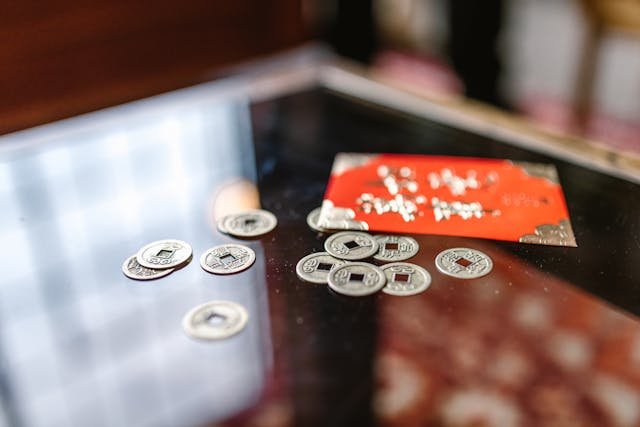The Lunar New Year, also known as Chinese New Year (春节, Chūnjié) or Spring Festival, is one of the most significant and widely celebrated holidays in Chinese culture. This vibrant and festive occasion marks the beginning of a new year on the traditional Chinese lunar calendar, bringing together families, communities, and entire cities in a grand celebration filled with traditions, food, and cultural performances. Whether you are celebrating for the first time or looking to deepen your understanding, here is a comprehensive guide to celebrating Chinese New Year in style.
Table of Contents
ToggleUnderstanding the Lunar New Year
The Lunar New Year typically falls between January 21 and February 20, depending on the lunar calendar. Each year is associated with one of the twelve animals in the Chinese zodiac (生肖, shēngxiào), which include the Rat, Ox, Tiger, Rabbit, Dragon, Snake, Horse, Goat, Monkey, Rooster, Dog, and Pig. 2024, for instance, is the Year of the Dragon (龙年, lóng nián), a symbol of strength, courage, and good fortune. The cycle repeats every twelve years, and each animal is believed to influence the personalities and fortunes of people born under its sign.
Preparations: Cleaning and Decorating
Cleaning the House (打扫房子, dǎsǎo fángzi): The lead-up to the Lunar New Year involves thorough house cleaning. This tradition, known as “sweeping away the dust” (扫尘, sǎo chén), symbolizes the removal of bad luck from the previous year and makes way for good fortune. It’s essential to complete the cleaning before the New Year to avoid sweeping away any incoming good luck. This activity is also seen as a way to start fresh and embrace the new beginning with a clean slate.
Decorations (装饰, zhuāngshì): Red (红色, hóngsè) is the dominant color in Lunar New Year decorations, symbolizing prosperity and good fortune. Common decorations include red lanterns (红灯笼, hóng dēnglong), couplets (对联, duìlián) with auspicious phrases, paper cuttings (剪纸, jiǎnzhǐ), and the character “福” (fú), which means “blessing” or “happiness.” Inverted “福” characters are often placed on doors, symbolizing that happiness is arriving. Other popular decorations include plum blossoms (梅花, méihuā) and kumquat trees (金桔树, jīn jú shù), which signify hope and prosperity.
New Year’s Eve: Family Reunion Dinner
The New Year’s Eve dinner (年夜饭, nián yè fàn), or “Reunion Dinner” (团圆饭, tuányuán fàn), is the most important meal of the year, bringing together family members near and far. The dinner is lavish and features an array of symbolic dishes:
Dumplings (饺子, jiǎozi): Resembling ancient Chinese gold ingots (金元宝, jīn yuánbǎo), dumplings symbolize wealth and prosperity. They are often filled with ingredients like pork, cabbage, and mushrooms. Some families even hide a coin inside one of the dumplings, and the person who finds it is said to have extra good luck in the coming year.
Fish (鱼, yú): Serving fish is essential because the word for fish sounds like “surplus” (余, yú) in Chinese, symbolizing abundance. The fish is typically steamed and served whole. It is customary to leave some fish uneaten, symbolizing that the surplus will carry over into the next year.
Spring Rolls (春卷, chūnjuǎn): These golden, crispy rolls symbolize wealth and prosperity due to their resemblance to gold bars. They are usually filled with vegetables, meat, or seafood, making them a versatile dish that is both delicious and meaningful.
Nian Gao (年糕): This glutinous rice cake symbolizes progress and growth, as “nian” means year and “gao” sounds like “tall” or “high.” Eating nian gao is believed to bring good luck and help people achieve new heights in the coming year.
The First Day: Welcoming the Deities and Ancestors
On the first day of the Lunar New Year (大年初一, dà nián chū yī), it is customary to offer sacrifices (祭祀, jìsì) to the deities and ancestors, seeking their blessings for the year ahead. Many people visit temples (寺庙, sìmiào) to pray for good fortune and success. It’s also a day for wearing new clothes (新衣服, xīn yīfu), preferably in red, to symbolize a fresh start and ward off evil spirits. Additionally, people avoid using negative words and actions to ensure they start the year positively.
Red Envelopes and Gifts
Red Envelopes (红包, hóngbāo): One of the most anticipated traditions is the giving of red envelopes filled with money (压岁钱, yāsuìqián). These are typically given by elders to children and unmarried adults, symbolizing good luck and prosperity. The amount of money should be even, as odd numbers are associated with funerals. The envelopes are also often decorated with auspicious symbols and messages.
Gift Giving (送礼, sòng lǐ): Exchanging gifts among family and friends is also common. Popular gifts include tea (茶叶, cháyè), fruit baskets (水果篮, shuǐguǒ lán), and sweets (糖果, tángguǒ). It’s important to avoid giving items considered inauspicious, such as clocks (钟, zhōng) or sharp objects (尖锐物品, jiānruì wùpǐn), as these can symbolize bad luck or severed relationships. Gifts are often wrapped in red or gold paper to further enhance the festive spirit.
Lion and Dragon Dances
Lion (舞狮, wǔshī) and dragon dances (舞龙, wǔlóng) are vibrant performances that are believed to bring good luck and drive away evil spirits. These dances are performed in public spaces and at private events, featuring acrobatic feats and accompanied by the beating of drums (鼓, gǔ), gongs (锣, luó), and cymbals (钹, bó). The lion dance typically involves two performers in a lion costume, while the dragon dance requires a larger team manipulating a long dragon figure. These performances are not only visually spectacular but also deeply symbolic, representing strength, bravery, and fortune.
The Lantern Festival: Culmination of Celebrations
The 15th day of the Lunar New Year marks the Lantern Festival (元宵节, Yuánxiāo Jié), which signifies the end of the New Year celebrations. People light and release lanterns (灯笼, dēnglóng) into the sky or float them on water, symbolizing letting go of the past and welcoming the future. Traditional activities include solving riddles (猜灯谜, cāi dēngmí) written on lanterns and eating tangyuan (汤圆, tāngyuán), which symbolize family unity and completeness. The Lantern Festival is a beautiful and symbolic conclusion to the New Year festivities, filled with light, joy, and hope.
Celebrating Chinese New Year Around the World
Chinese New Year is celebrated by Chinese communities worldwide (世界各地, shìjiè gèdì), with each adding its local flavor to the festivities. In cities like San Francisco, New York, London, and Sydney, grand parades (游行, yóuxíng) featuring lion dances, dragon dances, fireworks (烟花, yānhuā), and cultural performances (文化表演, wénhuà biǎoyǎn) attract thousands of participants and spectators. These events not only celebrate Chinese culture but also foster a sense of community and cultural exchange.
Tips for Celebrating Chinese New Year in Style
- Embrace Red: Incorporate red in your decorations, clothing, and even food to attract good luck and ward off evil spirits.
- Learn a Few Phrases: Simple greetings like “新年快乐 (Xīnnián kuàilè)” meaning “Happy New Year” and “恭喜发财 (Gōngxǐ fācái)” meaning “Wishing you prosperity” can go a long way in participating in the celebrations.
- Participate in Cultural Activities: Attend local Chinese New Year events, watch lion and dragon dances, and try making traditional foods like dumplings or spring rolls.
- Honor Traditions: Respect the customs and traditions, such as cleaning before the New Year, avoiding negative words, and not washing hair on the first day to retain good luck.
Conclusion
Celebrating Chinese New Year in style involves more than just enjoying the festivities; it’s about understanding and respecting the rich cultural traditions that have been passed down through generations. By immersing yourself in the customs, food, and activities, you can fully appreciate the spirit of the Lunar New Year and welcome the new year with joy and prosperity. Whether you are in China or part of the global Chinese diaspora, these traditions offer a meaningful way to connect with family, friends, and community. Happy New Year! 新年快乐 (Xīnnián kuàilè)!
Vocabulary List
- 春节 (Chūnjié) – Spring Festival (Chinese New Year)
- 生肖 (shēngxiào) – Chinese zodiac
- 龙年 (lóng nián) – Year of the Dragon
- 打扫房子 (dǎsǎo fángzi) – Cleaning the house
- 扫尘 (sǎo chén) – Sweeping away the dust
- 装饰 (zhuāngshì) – Decorations
- 红色 (hóngsè) – Red
- 红灯笼 (hóng dēnglong) – Red lanterns
- 对联 (duìlián) – Couplets
- 剪纸 (jiǎnzhǐ) – Paper cuttings
- 福 (fú) – Blessing or happiness
- 梅花 (méihuā) – Plum blossoms
- 金桔树 (jīn jú shù) – Kumquat trees
- 年夜饭 (nián yè fàn) – New Year’s Eve dinner
- 团圆饭 (tuányuán fàn) – Reunion Dinner
- 饺子 (jiǎozi) – Dumplings
- 金元宝 (jīn yuánbǎo) – Gold ingots
- 鱼 (yú) – Fish
- 余 (yú) – Surplus
- 春卷 (chūnjuǎn) – Spring rolls
- 年糕 (nián gāo) – Glutinous rice cake
- 大年初一 (dà nián chū yī) – First day of the Lunar New Year
- 祭祀 (jìsì) – Offer sacrifices
- 寺庙 (sìmiào) – Temples
- 新衣服 (xīn yīfu) – New clothes
- 红包 (hóngbāo) – Red envelopes
- 压岁钱 (yāsuìqián) – Money given to children as a New Year gift
- 送礼 (sòng lǐ) – Gift giving
- 茶叶 (cháyè) – Tea
- 水果篮 (shuǐguǒ lán) – Fruit baskets
- 糖果 (tángguǒ) – Sweets
- 钟 (zhōng) – Clock
- 尖锐物品 (jiānruì wùpǐn) – Sharp objects
- 舞狮 (wǔshī) – Lion dance
- 舞龙 (wǔlóng) – Dragon dance
- 鼓 (gǔ) – Drums
- 锣 (luó) – Gongs
- 钹 (bó) – Cymbals
- 元宵节 (Yuánxiāo Jié) – Lantern Festival
- 灯笼 (dēnglóng) – Lanterns
- 猜灯谜 (cāi dēngmí) – Solving riddles written on lanterns
- 汤圆 (tāngyuán) – Glutinous rice balls
- 世界各地 (shìjiè gèdì) – Worldwide
- 游行 (yóuxíng) – Parades
- 烟花 (yānhuā) – Fireworks
- 文化表演 (wénhuà biǎoyǎn) – Cultural performances








